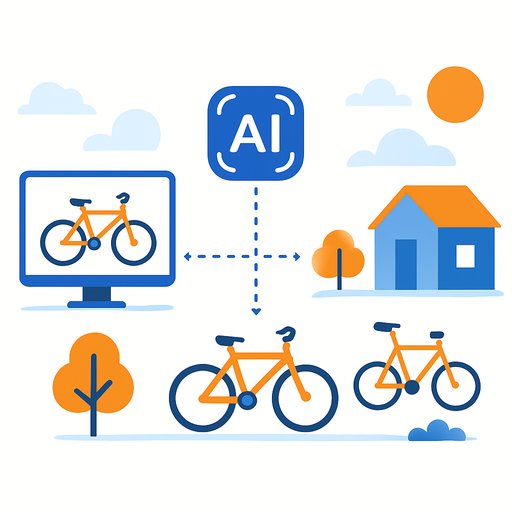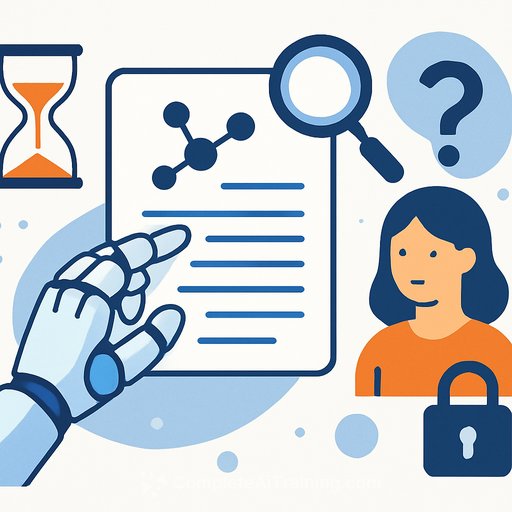Teaching Vision-Language Models to Spot Your Bowser in a Crowd
Vision-language models are great at saying "that's a dog," but stumble when asked "where's my dog?" A new training method from researchers at MIT and the MIT-IBM Watson AI Lab closes that gap by teaching models to localize specific, personalized objects across new scenes.
Think of finding a French Bulldog named Bowser at a busy dog park. Humans use context-collar color, owner proximity, gait-to track the same instance over time. Standard VLMs often ignore context and rely on class labels. This method forces models to use context so they can find Bowser, not just any dog.
The core problem: in-context localization
Large language models learn remarkably well from a few examples placed in context. Many expected VLMs to inherit that ability. They don't. Some visual signal is likely diluted by how the vision and language components are merged, and existing fine-tuning data rarely show the same instance across different images.
Typical datasets mix unrelated objects and scenes. The model never practices recognizing the same object in multiple contexts, so it can't generalize instance identity beyond broad categories.
The method: use tracked instances and ask better questions
The team curated training samples from video-tracking sequences-e.g., a tiger walking across a grassland. They cut frames at intervals to vary the background and motion, then built inputs containing multiple images of the same instance with Q&A prompts about its location.
This setup trains the model to localize consistently by leaning on context (shape, markings, surroundings, movement), not just class priors. Frame spacing matters: too close, and there's not enough diversity; too far, and identity becomes ambiguous.
Stopping shortcut learning with pseudo-names
VLMs tend to "cheat" by using pretrained label correlations (see tiger + "tiger"). To break that shortcut, the researchers replaced category labels with neutral aliases-e.g., calling the tiger "Charlie."
With aliases, the model can't rely on memorized class-label pairs. It's pushed to infer identity from visual and contextual cues across frames and scenes.
Results that translate to practice
- Fine-tuning with the tracked-instance dataset improved personalized localization accuracy by about 12% on average.
- Adding pseudo-names increased gains to roughly 21%.
- Performance improvements scale with model size.
- General capabilities remain intact; the method targets instance localization without degrading broader skills.
- Models trained this way outperformed state-of-the-art baselines on few-shot personalized localization.
Why it matters
- Consumer and safety: tracking a child's backpack through a school day; monitoring a pet at the park.
- Science and conservation: localizing a specific animal across camera traps for behavior and population studies.
- Accessibility: helping visually impaired users find specific items in a room.
- Productivity: more reliable grounding for robotics, AR assistants, and creative tools.
"Ultimately, we want these models to be able to learn from context, just like humans do. If a model can do this well, rather than retraining it for each new task, we could just provide a few examples and it would infer how to perform the task from that context. This is a very powerful ability," says Jehanzeb Mirza.
How to apply this in your lab or stack
- Assemble multi-image instance datasets from video-tracking sources; ensure each sample shows the same object across varied contexts.
- Use neutral aliases (pseudo-names) to suppress class-prior shortcuts during training and evaluation.
- Control temporal spacing between frames to balance diversity with identity consistency.
- Formulate instruction-style prompts that ask for localization and rationale; keep the rest of the model frozen where possible.
- Benchmark with few-shot setups using held-out instances to measure true in-context localization, not memorization.
- Audit for forgetting by re-running standard VLM evals to verify general capabilities remain stable.
Open questions and next steps
Why VLMs don't inherit strong in-context learning from their base LLMs remains unresolved. Future work includes probing the vision-language fusion stage and exploring mechanisms that boost instance-level grounding without additional retraining.
The work will be presented at the International Conference on Computer Vision. For broader context on in-context learning mechanisms, see this overview on arXiv: What learning algorithm is in-context learning?
Team and support
Contributors include researchers from MIT, the MIT-IBM Watson AI Lab, Weizmann Institute of Science, IBM Research, Johannes Kepler University, Tuebingen AI Center, Tel Aviv University, and others. The project received funding, in part, from the MIT-IBM Watson AI Lab.
Further learning
If you're building VLM pipelines or benchmarking instance-level grounding, you may find curated training resources useful: Latest AI courses.
Your membership also unlocks:






